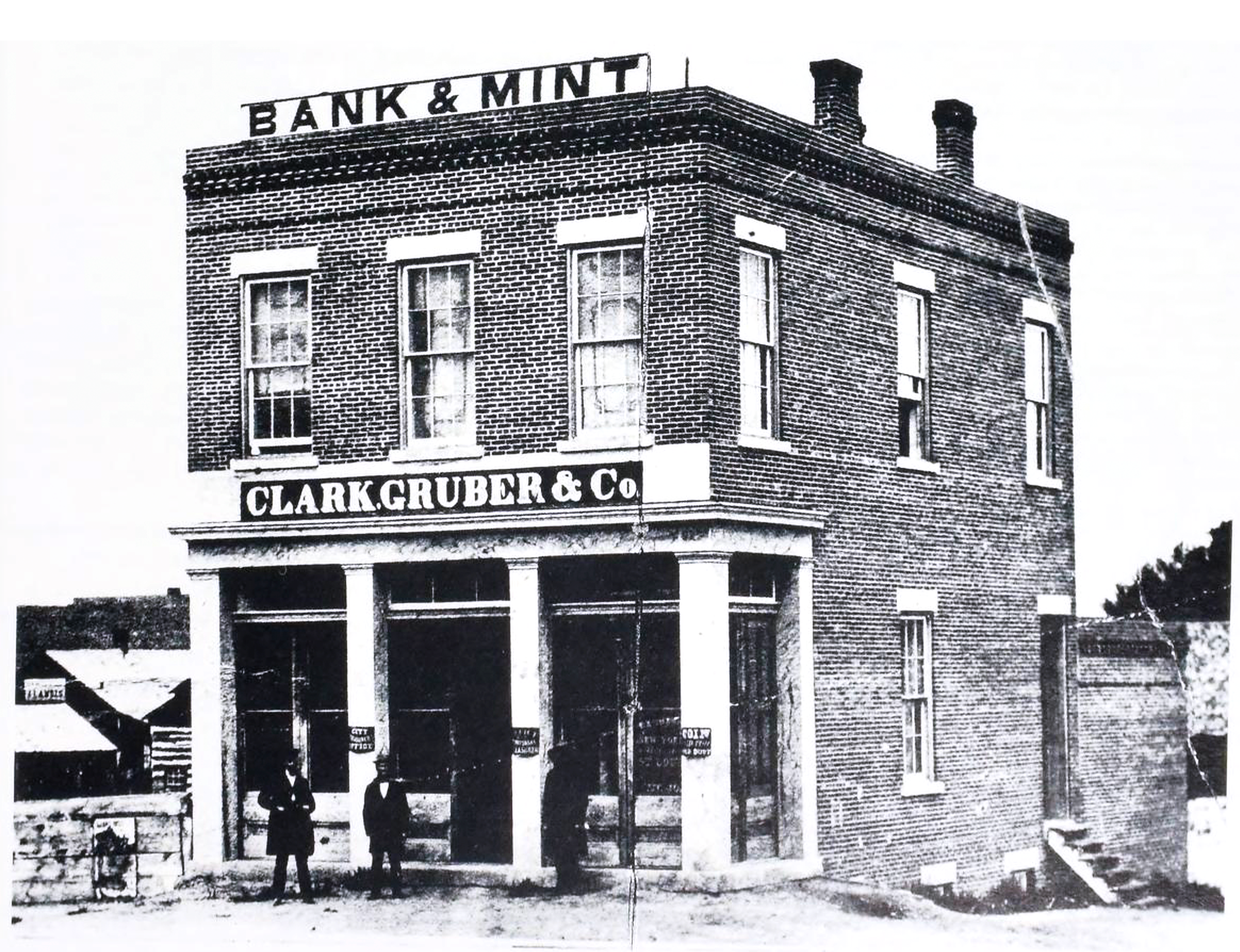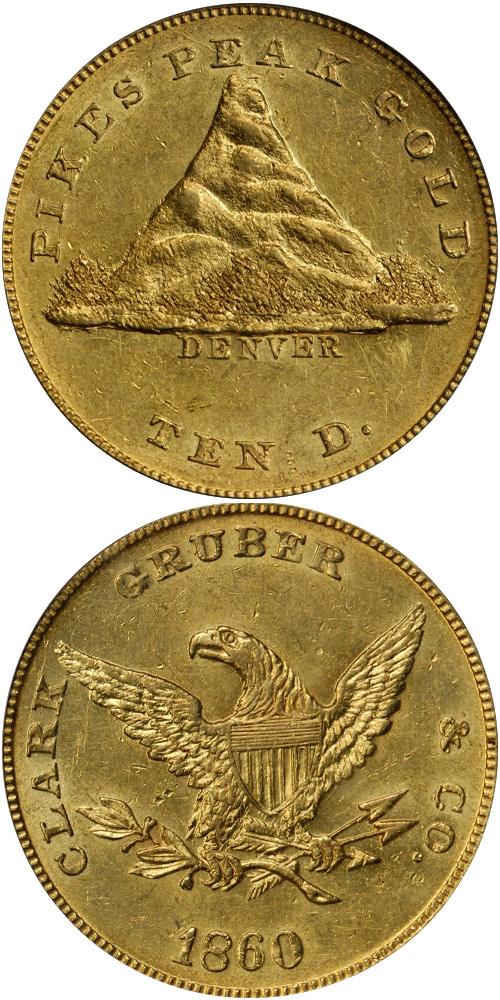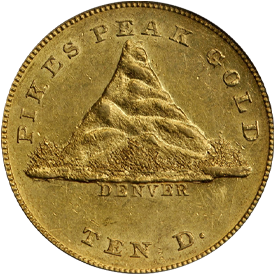Following extensive gold discoveries in Colorado, near the present-day site of Denver, in 1858-1859 word spread to the East and a new gold rush was on. Seeking a commercial opportunity, the firm of Clark, Gruber & Co., Leavenworth, Kansas bankers, established a branch in Denver. Principals of the firm were Austin M. Clark, Milton Edward Clark and Emanuel Henry Gruber. In the early days, handling of gold dust was expensive. To ship dust and bullion to the East for coining at the Philadelphia Mint involved a five percent insurance premium and another five percent for express charge, not to mention a delay which ranged from several weeks to several months. To remedy this, Clark, Gruber & Co. decided to mint coins from native metal.
In December 1859, Milton E. Clark went to New York and Philadelphia to arrange for the acquisition of coining and metal processing machinery. It is believed that the dies were ordered through Bailey & Co., a Philadelphia jewelry establishment. A mint was built in Denver at the northwest corner of the intersection later to become Market and 16th streets. In April 1860 the machinery arrived on an ox-drawn wagon. On July 25th the Rocky Mountain News reported the first production:
...we forthwith repaired to the elegant banking house of the above firm...and were admitted to their coining room in the basement where we found preparations almost complete for the issue of the Pikes Peak coin. A hundred "blanks" had been prepared, weight and fineness tested, and last manipulation gone through with, prior to their passage through the stamping press. The little engine that drives the machinery was fired up,
belt adjusted, and between three and four o'clock the machinery was put into motion and "mint drops" of the value of $10 each began dropping into a tin pail with the most musical "clink." About $1,000 were turned out, at the rate of 15 or 20 coins a minute, which was deemed satisfactory for the first experiment.
The initial coinages were of the $10 and $20 denomination. Later, pieces of $2.50 and $5 were coined. By October 1860 the coins were in wide circulation throughout the territory. By that time $120,000 worth had been struck.

The quarter eagle and half eagle of 1860 were closely copied from contemporary federal issues but were saved from being duplicates by the inscription. Totally diverging from this fashion were the $10 and $20 issues which had a new unique design and bore on the obverse a fanciful depiction of Pikes Peak shaped as a sharp volcanic-looking cone, quite unlike the real appearance of Pikes Peak.
New dies were produced in 1861 for the larger denominations, changing the design to resemble federal issues. As with the quarter and half eagles the inscription set them apart.
In 1862 Clark, Gruber & Co. offered its building and facilities for use as an official mint. Their proposal was eventually accepted and Clark, Gruber & Co. went out of the minting business. While the government intended to produce coins in Denver at the time, no action resulted, and no federal issues were struck. Operations were limited to assaying and refining. It was not until 1906 that the new Denver Mint began its operations, thus marking the federal production of coins in Colorado. By that time the gold sources nearby Denver had diminished in importance to the point it was no longer the main source of bullion. The mining operations in the Cripple Creek district, located south of Denver, provided gold for operations at the Mint.







